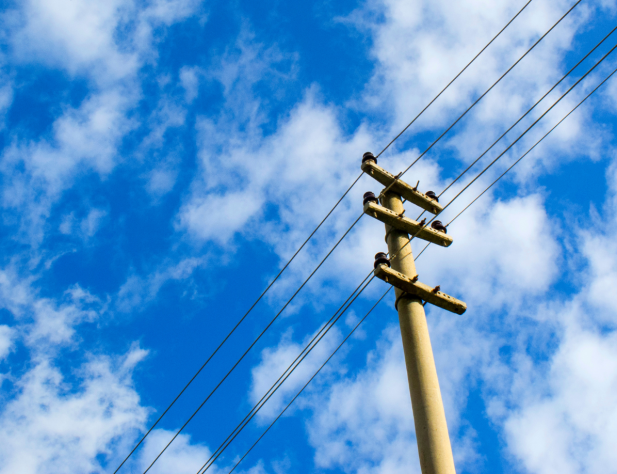Current electricity distribution planning rules are no longer fit for purpose, as they focus on annual maximum demand, despite the electricity grid being underutilised most of the year.
At the same time, electrification and increasing Consumer Energy Resources (CER) uptake requires better visibility over the low-voltage network. But distribution networks aren't required to transparently share information about network hosting capacity and constraints.
That's why we've submitted a rule change request to the Australian Energy Market Commission (AEMC), to ensure consumers don't pay more than they have to.
What are the issues?
- Due to a lack of hosting capacity information, consumers and installers don’t know where Consumer Energy Resources (CER) are best located in the grid. This results in longer connection times and prevents consumers from making informed investment decisions, thus missing out on significant cost savings.
- Electrification and CER uptake is expected to increase rapidly and unevenly.
- Networks aren't built as efficiently and cheaply as they could be, resulting in costly upgrades that could have been avoided. As electricity distribution costs make up the largest portion of an electricity bill, this means that consumers pay more for their electricity.
Where our rule change comes in
Our rule change addresses these issues by:
1. Ensuring networks make better use of existing data and improve the granularity of information used in future planning.
We have requested the Australian Energy Market Commission change the National Electricity Rules (NER) requirements to make Distribution Annual Planning Reports (DAPRs) fit-for-purpose as consumers electrify and invest in Consumer Energy Resources (CER).
Our proposed approach will require networks to outline how they will develop tools to collect and use more localised, granular data and information. This data would paint a clearer picture of network utilisation, help avoid capital overinvestment, support non-network investments and ultimately, lower network costs.
2. Significantly increasing transparency by making the data, including Consumer Energy Resources (CER) hosting capacity maps publicly available.
The rapid increase in adoption of Consumer Energy Resources (CER) — such as rooftop solar, battery storage and electric vehicles — requires more frequent, granular, and comprehensive modelling and planning to account for the quickly changing electricity network and CER hosting capacity.
Networks aren't required to transparently share information about network and CER hosting capacity and constraints, including where the best network locations are for community batteries and electric vehicle charging infrastructure.
Increased visibility of networks through hosting capacity maps allows for better decision making and can accelerate connection processes.
3. Requiring networks to adopt a more forward-looking approach to planning that accommodates CER uptake at least-cost for consumers, while ensuring better network utilisation.
Distribution Annual Planning Reports (DAPRs) have a five-year planning horizon, whereas the Australian Energy Market Operator (AEMO)'s Integrated System Plan (ISP) plans for at least 20 years.
Further adoption of Consumer Energy Resources (CER) and electrification doesn't align well with existing Distribution Network Service Provider (DNSP) expenditure proposal timeframes and planning processes, so longer projection is needed.
Improved planning can ensure that networks are right-sized and provide least-cost investment options for consumers interested in investing in CER.
4. Mandating consistent community engagement by Distribution Network Service Providers (DNSPs).
An increasing number of local communities, particularly those at high risk of extreme weather events, have shown an interest in playing a direct role in planning the future of their local energy system. Despite this, there is no standard requirement for Distribution Network Service Providers (DNSPs) to engage with communities at particularly high risk of extreme events.
As a result, community needs and priorities are often overlooked in distribution planning. This diminishes opportunities for efficient investment in, and operation of, electricity services, which could reduce costs for consumers and help achieve greenhouse gas emissions reduction targets.
FAQs
Australia’s energy system is changing rapidly, and network spending is high and increasing. As a result, more robust, integrated network planning is needed to make sure distribution network costs are efficient and reduce the cost of energy for households and small businesses.
Distribution Annual Planning Reports (DAPRs), which are submitted by Distribution Network Service Providers (DNSPs) to the Australian Energy Regulator (AER), are no longer fit for purpose to achieve the National Electricity Objective.
DAPRs have a five-year planning horizon, which is unlikely to account for further CER adoption and electrification.
In contrast, Integrated Distribution System Planning extends this horizon, enabling better planning, while also increasing transparency, better supporting Consumer Energy Resources (CER) integration and ensuring efficient electricity network utilisation.
The need for greater visibility into the distribution system has been identified as a gap in energy sector planning and reporting for some time.
Compared to current planning approaches, Integrated Distribution System Planning (IDSP) is a whole-of-system approach to meeting electricity distribution requirements and expanding consumer choice, supported by shared data.
These changes will help achieve the National Electricity Objective and result in a host of benefits for consumers and Distribution Network Service Providers (DNSPs), including:
- Generating more value from existing network infrastructure and already available data, particularly from smart meters
- Proactive network planning to right-size investment in Consumer Energy Resources (CER)
- Improved network utilisation
- Improved oversight of network planning and costs
- More targeted and efficient investment in Consumer Energy Resources (CER) and distributed energy resources
- Reduced electricity network costs
The National Electricity Objective (NEO) is one of three objectives governing and guiding the Australian Energy Market Commission (AEMC) in its activities under the relevant national energy legislation.
As outlined in the National Electricity Law (NEL), the National Electricity Objective promotes investment in, operation and use of electricity services for the long-term benefit of consumers, particularly with regard to reliability and supply of electricity.
Find out more about the National Energy Objectives and related Electricity Objective (NEO) at the AEMC's website.

